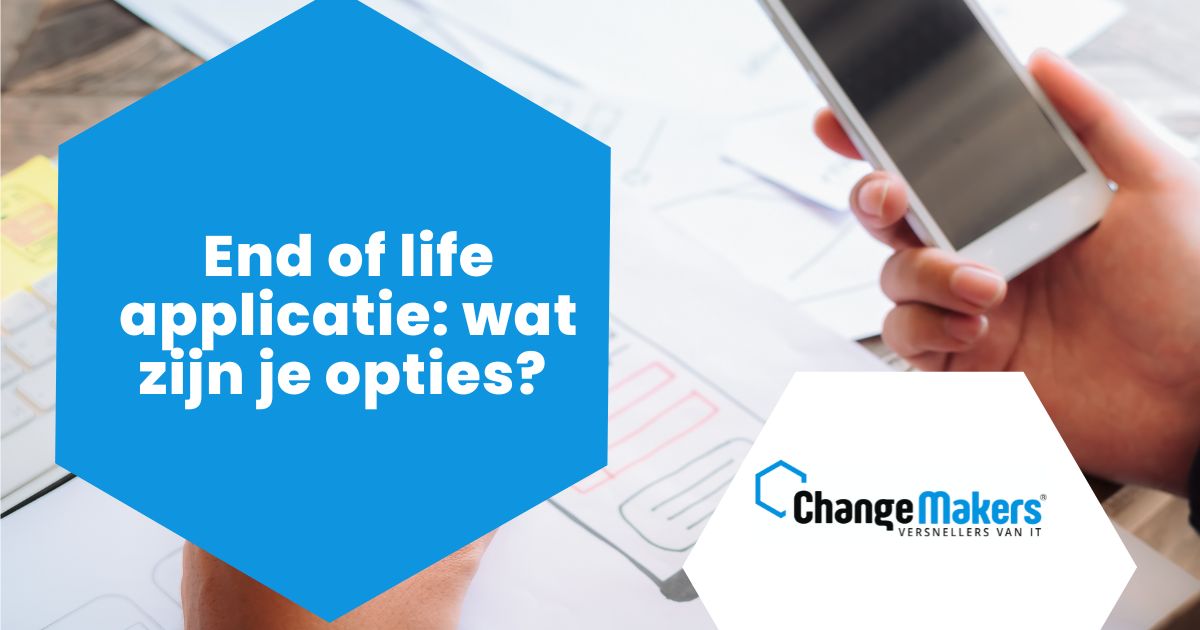Do you work with applications or software packages within your organization? For example, for payroll or a CRM? Then these may announce an End of life (EOL). That means the application or software is going to expire and no more updates or maintenance will be done. So what are your options? Low-code can then be a tremendously fine solution. We’ll tell you more about it in this blog.
What is the End of life of software or an application?
The End of life of software or an application simply means the end of life of this software or application.
That is, the vendor specifies a date from which support will no longer be provided. Thus, the software is then no longer maintained and updates are no longer performed. This creates problems. You can still continue to use the software in principle, but without maintenance and updates, of course, it’s not wise.
Examples of EOL applications
For example, a very recognizable example of such an EOL application or software is Microsoft Windows operating systems. The End of life of Windows 10, for example, has already been announced. As of October 2025, this software will no longer be updated or maintained. The same goes for old Iphones, for example. Older models no longer come with the new iOS operating systems.
So the same can apply to, say, your accounting systems or CRMs.
What can you do if your application or software package announces an End of Life?
Then it is wise to start looking at your options. So you may consider continuing to use the software, but it is not recommended at all. You can also start looking at other software packages. Or you choose software that is a 100% fit with your organization. Then low-code application development is a perfect solution.
What happens when a software is still used after EOL?
Do you still choose to use software after an End of life? Then you run the necessary risks. Moreover, the options are limited.
-
Terminate licenses or functionalities of software
You can no longer add licenses or functionality because the vendor no longer provides support. Thus, the software remains as it is as of End of Life.
-
Software problems are your responsibility
Any software problems are also no longer the responsibility of the vendor, but yours as an organization. After an End of Life, the vendor simply no longer owns and is responsible for the software.
-
The software no longer works well with other software
It is also unlikely to continue to work well with other enterprise applications. Because your other business applications do continue to be updated they change. Software with an End of Life cannot keep up with this change because it is no longer being updated. Read how low-code is a good solution when working with multiple IT vendors.
-
Safety is no longer guaranteed and is deteriorating
The security of the software deteriorates because no more updates are done to keep the package safe. Read more about low-code security here.
Notice! Soon the new NIS2 guideline will also go into effect
Avoid AVG risks
This last point, of course, is enormously important. These days, privacy is paramount. Especially with the new General Data Protection Regulation (AVG) law. If the software your organization uses is no longer secure, the chances of data leakage from an ERP, DMS, CRM or HRM package are increasing.
This has unpleasant consequences because you may lose your competitive advantage. When personal information is involved, of customers or employees, the consequences are likely to be even greater. That’s because then you break the AVG and face hefty fines.
Read tips! Are you running into something else? Perhaps you have insufficient IT capacity, IT does not sufficiently understand organizational needs or you work with multiple IT vendors? Even then, low-code can be the solution.
Low-code is the future
Low-code has an awful lot of advantages of which perhaps the most important is that it is a future-proof, fast and efficient solution. Low-code is really the future of application development because it also won’t have an End of life anytime soon.
According to Gartner, by 2025 even 70% of all applications will be created with low-code technology, and Mendix indicates that 70% of low-code users with no development experience mastered low-code within a month. Low-code also greatly reduces the duration of the application development process.
Read tip! Here’s how to get started with low-code
Start your low-code adventure with ChangeMakers
Future-oriented software that is also fast and efficient. That sounds good right? Then start your low-code adventure with ChangeMakers. Then together we will provide a path to a faster, more efficient IT infrastructure within your organization. Whether you like to outsource the entire development process or just want support and advice. We can help you in a way that will move you forward. Schedule a no-obligation consultation with one of our consultants to look at your situation together and discuss how low-code will help you. Contact us today to schedule your appointment!




